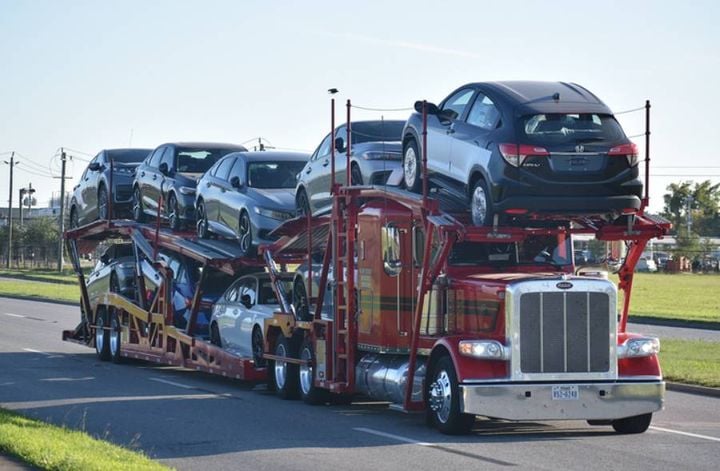
The transport industry is still operating with significantly fewer carriers than in pre-COVID times.
Photo: F. Muhammad
Earlier this month, during the quarterly Manheim Used Vehicle Value Index call, I had the opportunity to provide an update on Cox Automotive’s role in the vehicle logistics industry – as well as the trends we’re seeing.
Within the Cox Automotive portfolio, our logistics capabilities are channeled through two prominent brands: Ready Logistics and Central Dispatch.
- Ready Logistics specializes in full-service capabilities, overseeing the inbound and outbound transportation of more than 1.1 million vehicles from Manheim physical auctions and digital marketplaces.
- Central Dispatch, our self-service load board, plays a pivotal role in facilitating the transportation of over 13 million vehicles through its leading digital platform. Additionally, our strategic focus on expanding services to new car inventory and consumer deliveries signifies our dedication to the growth areas within the industry.
In our data, fueled by touching about 75% of wholesale vehicle moves, we are seeing some interesting developments converging to create a few challenges, as well as opportunities, in vehicle transportation.
The short version of the story is that the steadily rising vehicle volumes – due to an increase in one-off moves, overall wholesale industry growth and OEM production increases – are pressuring the system. This is especially true as the transport industry still runs with sizably fewer carriers than in pre-COVID times. That supply and demand imbalance is driving prices higher versus pre-pandemic levels.
But diving into the details reveals three specific trends shaping the vehicle moving business:
Growth of Consumer Digital Retailing Creates New Expectations
The need to deliver a vehicle to a consumer on a single-car flatbed is an enormous pivot and opportunity for the transport industry. There is a widely different expectation between wholesale moves with delivery windows measured in days versus consumer deliveries measured in two-hour timeframes. Today’s consumer has become accustomed to the “Amazon” tracking experience, which requires major investments by transport companies to build out those capabilities.
Changing Auction Landscape Challenges Routes and Loads
With more cars being sold digitally – especially offsite, such as from a dealership lot – we are seeing an increase in one- to two-car moves from dealerships rather than full loads coming into and out of physical auctions. This makes dispatch more challenging because of the need to build and optimize a greater number of routes versus dispatching full truckloads with similar origins and destinations.
Percentage of Repo Moves Increases
Today, repo moves make up almost 70% of our Ready Logistics auction volume compared to 2019, when it was at 30%. Repo cars are harder to move because of redemption periods, as well as a higher percentage of inoperability. In addition, these vehicles are often one-offs, which makes them less desirable for carriers to accept, and there are fewer off-lease and other cars flowing into auctions with which to bundle the repo cars.
Combined with the supply/demand imbalance, wage rates and insurance cost inflation mean prices will continue to rise. Additionally, delivery times will become more challenging due to higher and more varied vehicle volumes and fewer available drivers.
And then there are the rising volumes of electric vehicles, which come with their own unique transport challenges. Because of the weight of the batteries, we have heard estimates of getting ~30% fewer vehicles on a transporter due to the 80-thousand-pound over-the-road limits. We are working closely with transporters to help minimize this issue, as this will have a large impact on capacity.
To mitigate the pain for shippers and carriers, Cox Automotive is investing heavily in technology to bring the latest capabilities to the industry. We believe that better load building and optimization, much like what is seen on the consumer-packaged goods side today, can mitigate many of today’s transport challenges. We are also investing in new artificial intelligence (AI) technology to build pricing algorithms that can determine in real-time the exact price to get inventory moving, as well as provide guidance on future pricing.
The complications of wholesale vehicle transportation are myriad. Focusing on supply chain efficiency and speed of delivery is how everyone will win in today’s more digital world.
Originally posted on Vehicle Remarketing
